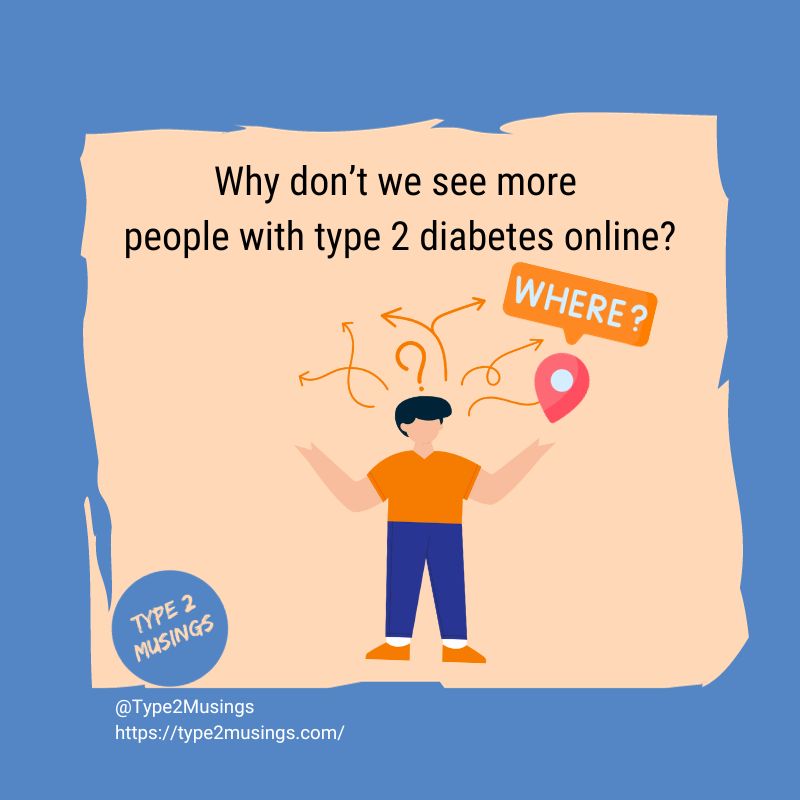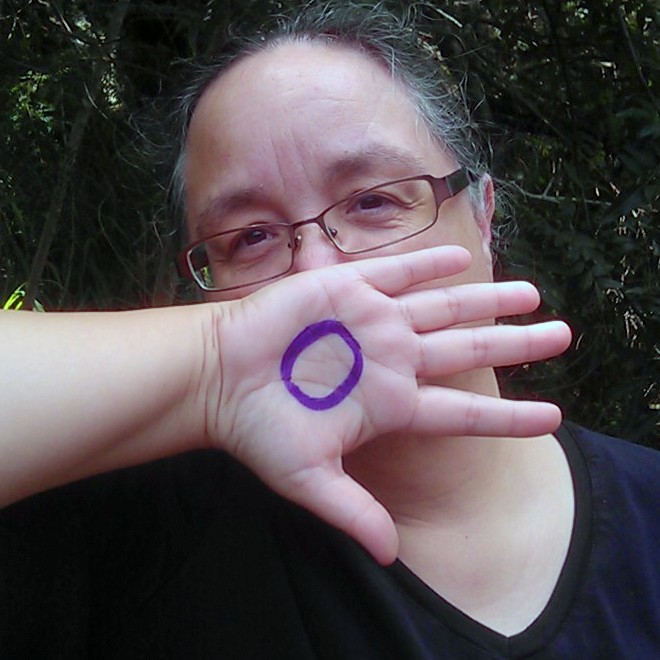Why don’t we see more people with type 2 diabetes online?
Here we are, in the wake of another Diabetes Awareness Month. A month of being bombarded with tributes to Dr. Banting, ads featuring that musician and his snazzy CGM, and PSAs going on and on about how we need to look for the signs. The same old questions came up – yet again. Why don’t we see more people with type 2 diabetes online?
According to the CDC just over 1-in-10 people in the US (11.6%) are living with diabetes. Of those, nearly 1-in-4 (22.8%) are undiagnosed. Clearly there are a lot of people who could benefit from heightened awareness.
Among all those people living with diabetes somewhere between 90 and 95% of them are living with type 2 diabetes. Yet the preponderance of awareness month messages are focused on type 1 diabetes. Given the numbers, you would think that people with type 2 would be more visible. But they are not.
Why is that?
It’s complicated.
Online isn’t always a welcoming place
This seems like the obvious place to start. Social media is rife with stigma, bullying, and misinformation.
Type 2 diabetes is framed as a lifestyle disease – it’s a result of poor health habits and practices. Comments easily devolve into stigmatizing accusations and judgment. The message is often “You did this to yourself, therefore you don’t deserve any sympathy or support.”
No consideration is given to the risk factors that are beyond the person’s control: genetics, ethnicity, and age. Assumptions are made based on appearances. If the person is overweight they must have type 2. If the person is young they must have type 1.
I’m certain there’s a sizable group of people living with type 2 diabetes who think, “Why subject myself to all that?”
Follow the money
Pharma and medical device companies shape a lot of what we see online through their sponsorships, donations and, yes, their ads. The bulk of industry support and messaging seems to focus on type 1 diabetes.
While it’s largely seen as good business to support patient advocates and advocacy, at the end of the day these companies are selling a product. The budgets for their advocacy support generally sits with their marketing department. And at some point they look to receive a benefit beyond building goodwill.
Up until recently diabetes companies were mostly marketing insulin pumps and continuous glucose monitors (CGMs). That meant their target market was people with type 1 diabetes.
It’s only been in the last couple of years that the benefits of using CGM in managing type 2 diabetes have been studied and reported. Health insurance coverage for CGM with type 2 remains spotty. Insulin-using people with type 2 diabetes go largely unacknowledged in conversations about insulin use and access.
The latest round of new pharmaceuticals aimed at managing diabetes might cause a shift in focus toward type 2 diabetes. GLP-1 agonists (e.g., Ozempic) have become weight loss drug darlings. Even though they are intended and approved for managing type 2 diabetes, GLP-1 agonists have become a very popular weight loss aid prescribed “off label.” So much so, that shortages are making it difficult for people using them to manage type 2 diabetes to get their prescriptions filled reliably.
Ultimately, the association between obesity and GLP-1 agonists is problematic for people with type 2. It feeds into the assumption that if a person just loses a few pounds their diabetes will go away. For those who take a GLP-1 agonist for blood glucose management and don’t lose any weight, the assumption is that they are to blame for their weight staying the same. These are the lines of thought that feed into and encourage stigma around type 2 diabetes.
Maybe they’re not looking for diabetes support online
I heard someone say, “There are plenty of people with type 2 diabetes online. They’re just not talking about diabetes.”
This idea intrigued me. Why did they think that was?
It has to do with the person with type 2 and their perception of their diabetes. They weren’t online seeking information and support to manage their health or condition.
If the perception is that my diabetes can be managed by taking a pill or two (e.g., metformin and glipizide), then I don’t need to seek out more information or support.
And if the perception is that exercise and weight loss are what’s needed to manage my type 2 diabetes, then there’s a whole separate ecosystem of fitness trainers and weight loss diets to address that. Diabetes might be part of the conversation, but it’s not the central concern.
If this is the case then it makes the absence of people with type 2 online and in social media a choice and not a reaction. It kind of makes sense.
What are we missing?
So if people with type 2 diabetes are getting their needs met for information and support elsewhere, what are we missing in their absence? Does it matter that the majority of the conversation and information online is focused somewhere else?
What’s missing is representation.
We miss seeing the daily triumphs and challenges that come with living with type 2 diabetes and are left with the frustrations. We miss seeing the exceptions to “the rule” that demonstrates how limited the stereotypes are. We miss seeing care options available and are left to manage the complexity on our own. We miss seeing someone like me in a similar situation and so we stay in isolation.
We miss connection and community – and the hope that can come with them.
REVISION — February 7, 2024
Another thought came up in social media regarding people with type 2 diabetes not seeking support online. And that is: they are living in overwhelm. For some people type 2 diabetes is only one of several (many?) health conditions they are faced with. Where do you begin when any changes to your health routine or self-care seems to set off a chain reaction that cascades all the ailments?
My heart aches for these folks because they are truly left only with the frustrations of living with type 2 diabetes.


